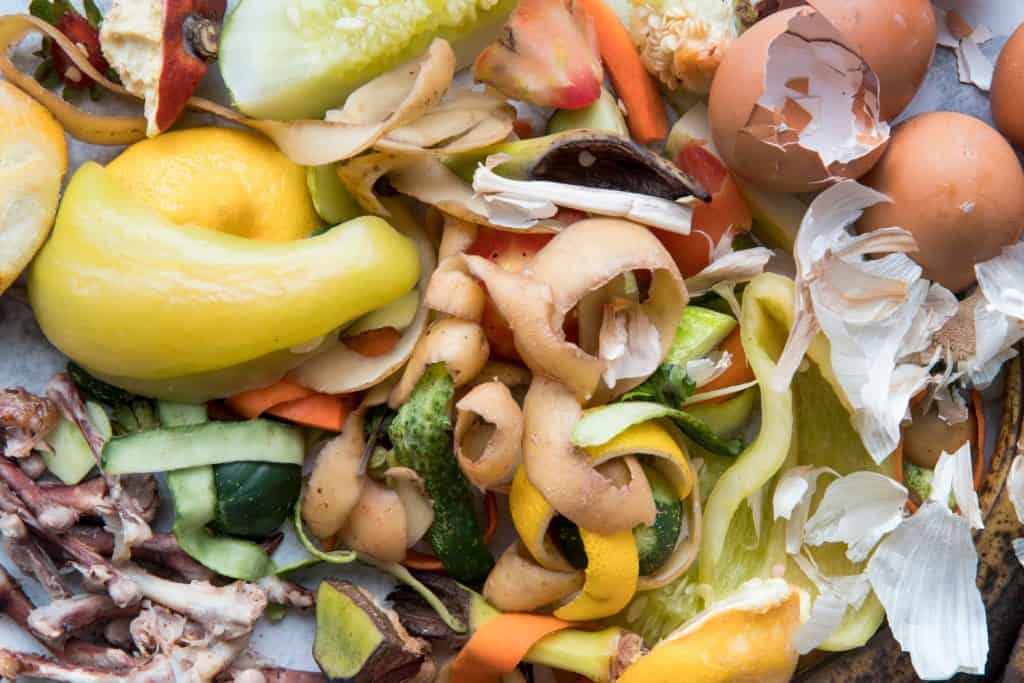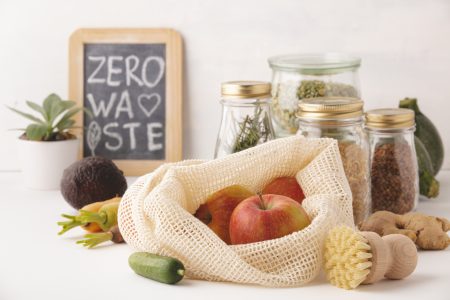
In This Article
Food waste, an all-too-familiar villain in our kitchens and supermarkets, is wreaking havoc on both our environment and economies. Imagine a scenario where every meal you toss into the trash isn’t just a missed opportunity for your taste buds, but a global issue contributing to landfills and climate change.
In this article, we’ll explore the fascinating journey from trash to treasure, delving into innovative solutions for reducing the staggering amount of food waste that plagues our world.
The Scale of the Problem
Before we dive into the creative ways we can tackle this issue, let’s take a moment to grasp the sheer scale of the food waste predicament. Brace yourself for some eye-opening numbers.
Did you know that approximately one-third of all the food produced globally never makes it from farm to fork? That’s a staggering 1.3 billion tons of food wasted each year. Picture the fields of produce, the bustling markets, and the kitchens around the world—now imagine a third of it vanishing into thin air.
And it’s not just the wasted meals we should be concerned about. Food waste has a dirty secret—it’s a major contributor to environmental degradation. When food rots in landfills, it releases methane, a potent greenhouse gas that’s about 25 times more damaging to the environment than carbon dioxide. It’s like adding insult to injury—first, we waste perfectly good food, and then we contribute to climate change while doing so.
But the impact doesn’t stop there. Food waste also has profound economic implications. From the individual who tosses leftovers to the massive losses in supply chains, the economic toll is colossal. It’s not just about the cost of the groceries we throw away; it’s about the resources—water, energy, and land—that go into producing that food.
In a world grappling with hunger, the paradox of food waste is particularly disheartening. As we discard tons of edible items, millions go to bed hungry every night. It’s a conundrum we can’t afford to ignore any longer.
Traditional Approaches to Food Waste Reduction
In the fight against food waste, we’ve had our tried-and-true warriors on the front lines. Let’s take a closer look at these traditional methods:
Composting and Anaerobic Digestion
One of the classics, composting, involves breaking down organic waste into nutrient-rich soil. It’s like giving your apple cores and carrot peels a second life as they transform into a gardener’s goldmine. Anaerobic digestion takes a similar approach but in an oxygen-free environment, producing biogas that can be used for energy. While these methods are eco-friendly, they face challenges in scalability and efficiency on a larger scale.
Food Donation Programs
A beacon of hope in the sea of waste, food donation programs connect surplus food from supermarkets, restaurants, and individuals with those in need. It’s a heartwarming solution that not only addresses hunger but also prevents perfectly good food from reaching the dumpster. However, logistical challenges, such as transportation and coordination, often hinder the full potential of these programs.
Consumer Awareness Campaigns
Sometimes, the simplest solution is the most powerful. Raising awareness among consumers about the impact of their choices can lead to reduced food waste. When people understand the journey from farm to fork and the resources invested in food production, they are more likely to think twice before tossing out that slightly bruised banana. However, changing habits is no easy feat, and the effectiveness of awareness campaigns varies.
Limitations and Challenges
While these traditional approaches have made commendable strides, they come with their share of limitations. Composting and donation programs can only address a fraction of the problem, and consumer awareness campaigns often struggle to create lasting behavioural change. It’s clear we need something more—something innovative.
Innovative Technologies
Innovative Technologies
Now, let’s step into the future, where technology takes the stage in our battle against food waste:
Smart Packaging and Labeling
Imagine a world where your food tells you when it’s about to go bad. Smart packaging utilizes sensors and intelligent labels to monitor the freshness of products in real time. This not only reduces the chances of consumers unknowingly buying soon-to-expire items but also helps retailers manage inventory more efficiently. No more guessing games; your food packaging becomes a communication channel, ensuring you enjoy your groceries at their prime.
IoT in Supply Chain Management
The Internet of Things (IoT) is not just for your smart home devices; it’s revolutionizing the way our food gets from the farm to our plates. Real-time monitoring and data analytics enable businesses to track inventory levels, predict demand, and optimize supply chains. By minimizing overstock and waste, IoT is a game-changer in the quest for a more efficient and sustainable food supply chain.
AI-Powered Food Waste Detection Systems
Harnessing the power of artificial intelligence, food waste detection systems are like vigilant guardians in grocery stores and restaurants. Using image recognition and machine learning algorithms, these systems can identify and flag items approaching their expiration dates. This not only helps businesses manage their inventory better but also allows for targeted discounts on items that need to be sold before they become waste.
Repurposing Food Waste
In the world of sustainability, repurposing food waste is akin to turning lemons into lemonade—quite literally in some cases. Let’s explore the innovative ways we’re transforming what was once destined for the landfill into valuable resources:
Circular Economy Initiatives
Enter the concept of the circular economy, where waste becomes a valuable input for new products. Companies are pioneering initiatives to repurpose food waste into innovative goods. Imagine discarded coffee grounds finding new life as skincare exfoliants or fruit peels becoming eco-friendly packaging. It’s not just about reducing waste; it’s about reimagining the entire lifecycle of our consumables.
Bioenergy Production from Organic Waste
What if I told you that your kitchen scraps could power a community? Enter bioenergy production, where organic waste, such as food leftovers and agricultural residues, is used to generate biogas through anaerobic digestion. This biogas can be harnessed as a renewable energy source, offering a two-fold benefit: reducing waste and producing clean energy. It’s a win-win for both the environment and our energy needs.
As we navigate this shift from seeing food waste as a problem to viewing it as a valuable resource, these repurposing initiatives showcase the ingenuity of turning waste into wealth.
Community Engagement and Behavioral Change
While technology and innovation play pivotal roles, the real change begins at the grassroots level—within our communities. Let’s explore how engaging individuals and fostering behavioural change can make a substantial impact:
Educational Programs for Responsible Consumption
Knowledge is power, and when it comes to reducing food waste, education is key. Imagine schools implementing initiatives that teach students about the environmental impact of waste and practical ways to minimize it. From composting lessons to understanding expiration dates, these programs instil lifelong habits that extend beyond the classroom.
Community Workshops on Sustainable Practices
Bringing people together is a powerful catalyst for change. Community workshops on sustainable cooking, meal planning, and responsible grocery shopping provide a platform for sharing ideas and insights. These gatherings not only empower individuals with the tools to make informed choices but also foster a sense of collective responsibility.
Collaborations Between Businesses, Governments, and NGOs
The battle against food waste is a team effort. Collaborations between businesses, governments, and non-profit organizations amplify the impact of individual initiatives. Public-private partnerships can drive comprehensive strategies, from implementing waste reduction policies to supporting local initiatives. It’s about creating a supportive ecosystem that encourages and rewards sustainable practices.
As we delve into the heart of communities, we realize that reducing food waste is not just about changing behaviours; it’s about creating a cultural shift towards valuing our resources and the effort that goes into producing our food.
Future Directions
As we navigate the present challenges, the horizon offers glimpses of exciting future directions that could redefine our relationship with food and waste:
Emerging Technologies and Strategies
The rapid evolution of technology presents new opportunities in the fight against food waste. Blockchain, for instance, can enhance traceability in the supply chain, ensuring that products are delivered fresh and reducing the chances of overstock. Advanced robotics may streamline processes in food production, minimizing errors that contribute to waste. Exploring and investing in these emerging technologies can pave the way for more efficient and sustainable systems.
Global Collaboration for a Unified Front
Food waste knows no borders, and addressing it requires a global effort. Collaborative initiatives between nations, businesses, and international organizations can harmonize strategies and share best practices. The exchange of knowledge and resources can create a collective impact that transcends individual efforts, making a significant dent in the global food waste crisis.
Conclusion
In the grand symphony of our planet, every bite of food carries a melody—a story of cultivation, transport, and preparation. Yet, a significant portion of this narrative is drowned out by the discordant notes of food waste. As we’ve journeyed through traditional approaches, innovative technologies, repurposing initiatives, and community engagement, we find ourselves at a crucial crossroads.
In conclusion, the path forward is illuminated by the choices we make today. Will we continue to squander our resources, or will we seize the opportunity to transform our trash into treasures that sustain us all? The power is in our hands, and as we navigate this intricate dance between innovation and tradition, let’s envision a future where every morsel is cherished, and waste is but a distant memory.



